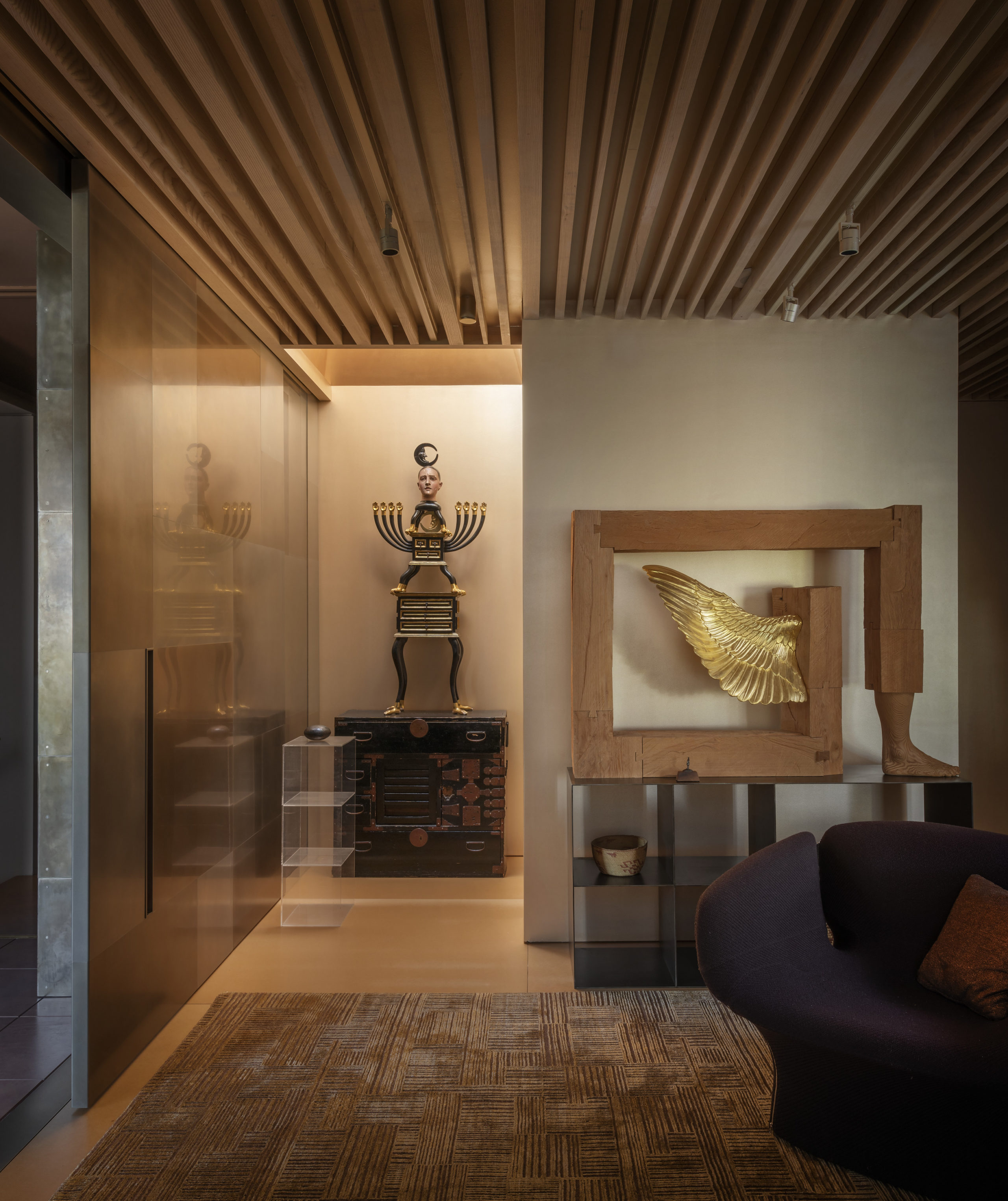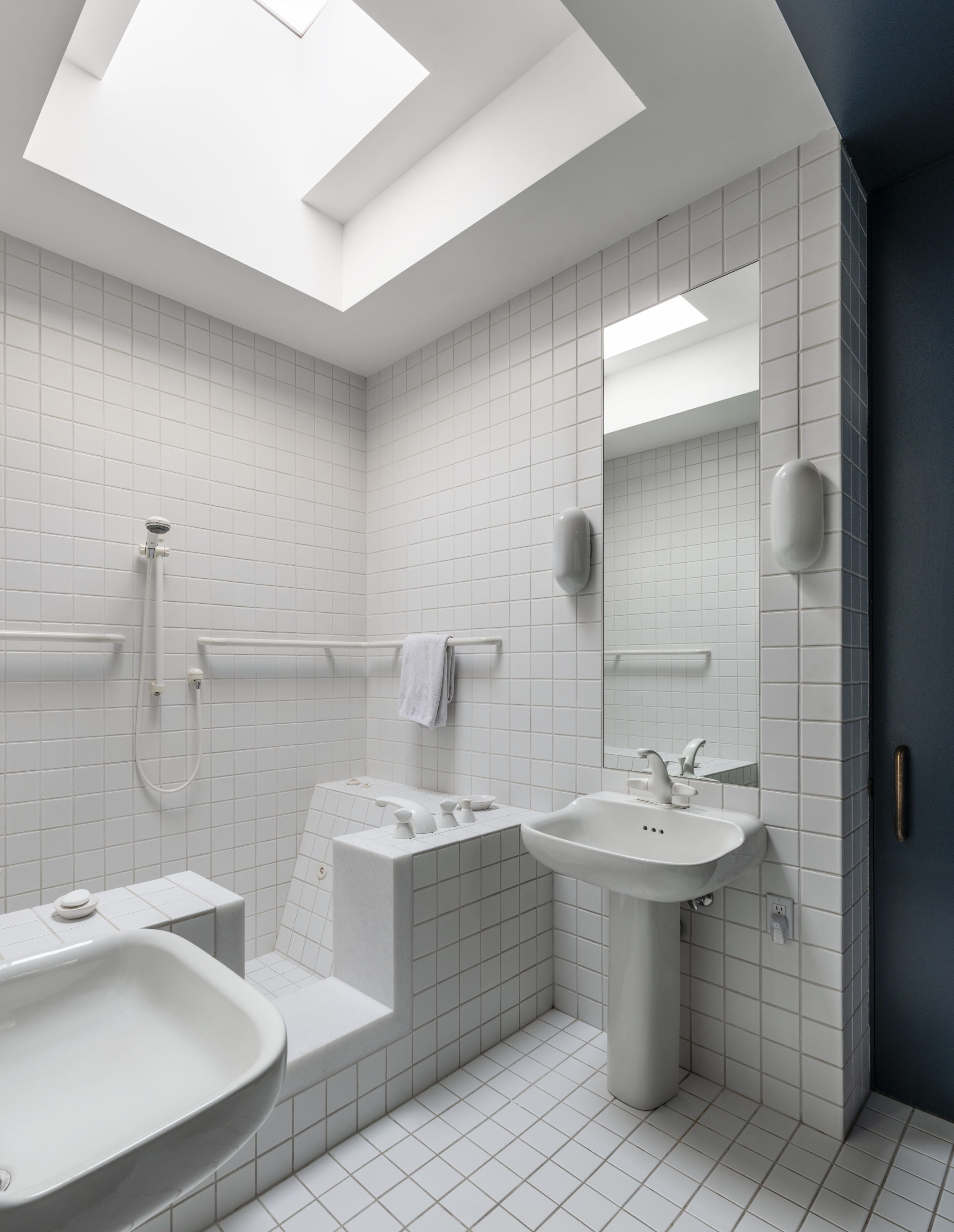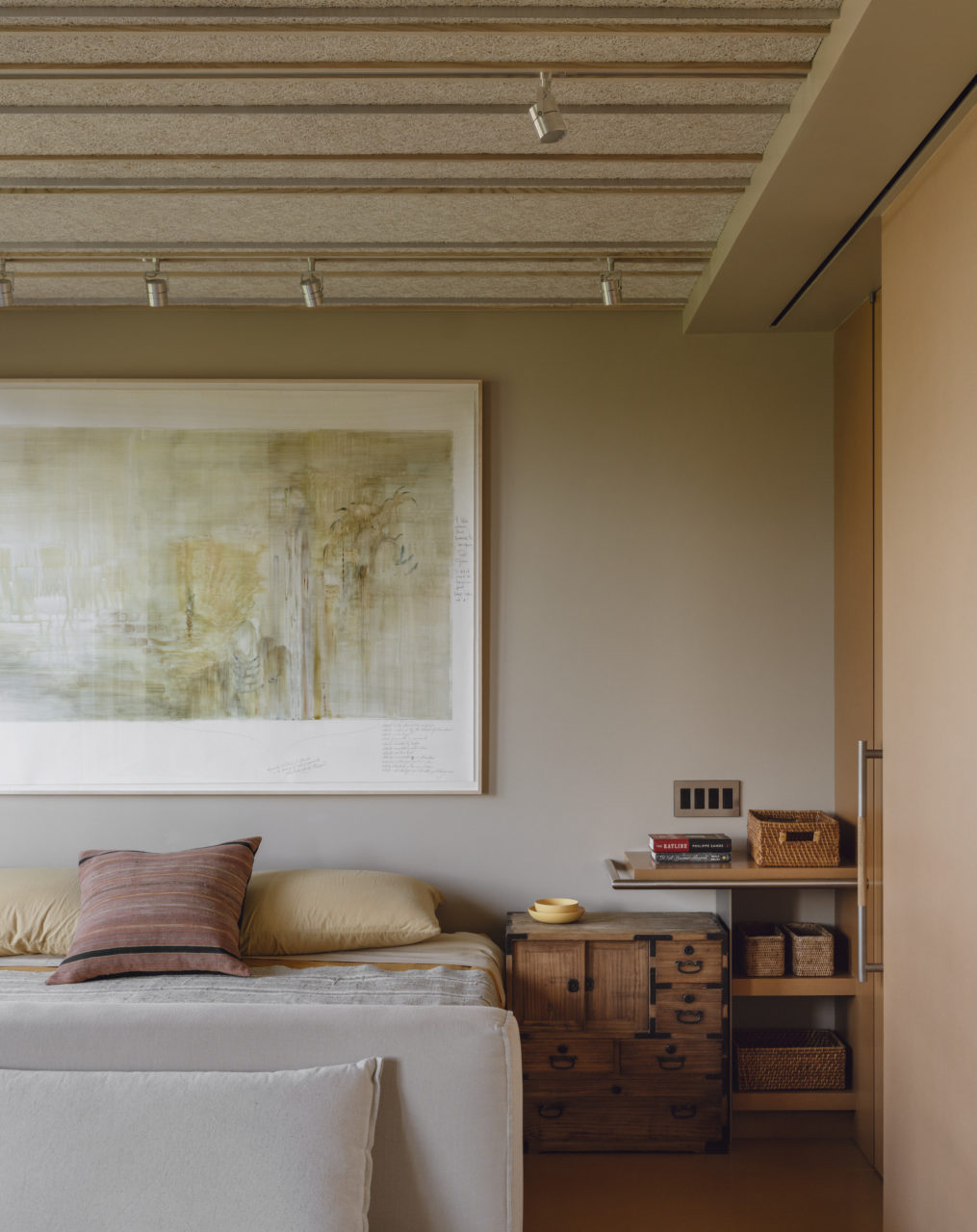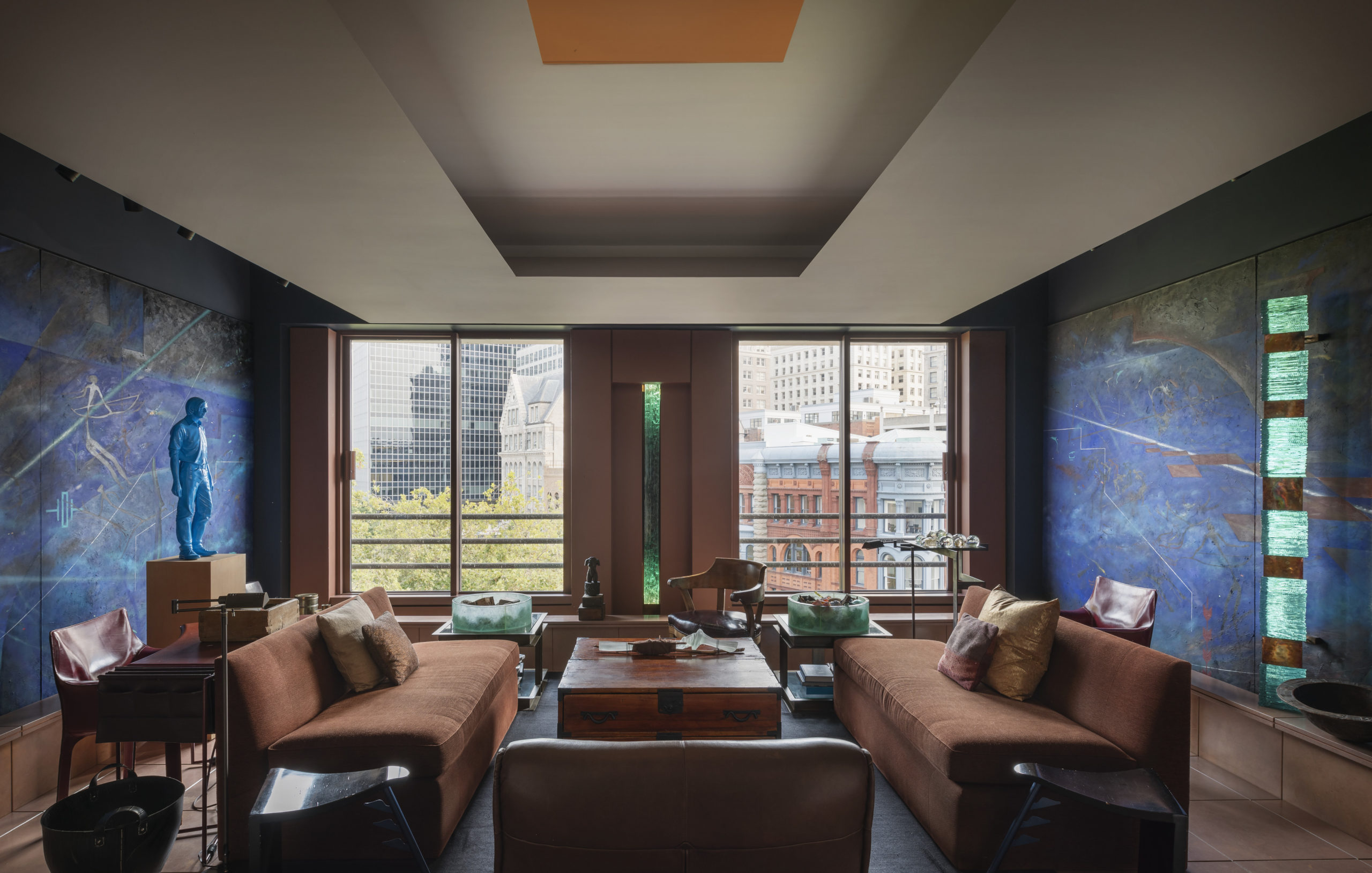In Pioneer Square, Seattle’s oldest neighborhood, a newly enlarged condominium demonstrates that history can be a living organism rather than an artifact frozen in time. After originally designing the penthouse as his personal residence in 1987, architect Jim Olson, founding principal of the firm Olson Kundig, has over the years refined and expanded it, fine-tuning the space as his personal life and that of his wife, Katherine, have ebbed and flowed.
Located blocks from Olson Kundig’s Seattle office, the condo caps a nine-story mixed-use building that Olson designed and developed. Having previously led the development of a mixed-use project in the iconic Pike Place Market in 1978, Olson along with four other local architects initiated this project, called the Olympic Block Building, on what was previously an empty lot, in a bid to bring new life to the neighborhood.

Choosing an inner unit with confined views, Olson envisioned the home as an urban refuge. “At the time, I had started Transcendental Meditation and was fascinated by the notion of clear consciousness,” he explained. The idea of this “inner sanctum” came from the architect’s spiritual practice.
The two-story condo is organized around a central stairwell lit by a sky monitor above. This light core is an architectural expression of “clear consciousness” and one inspired by the artist James Turrell, with whom Olson first collaborated in the early 1980s when the artist completed a site-specific installation in a nearby vacant building. The space is the physical and spiritual heart of the home. “I like to make the home feel like a sacred place,” Olson said. He works to design “moments that take you out of the everyday and into an awareness of beauty.”

While the core has remained intact, over the decades Olson has continually made adjustments to the home. “I’m not the type of architect who goes off on big tangents,” he explained. “I just want to be who I am and keep developing it, refining it, making it perfect.” Changes ranged from minor tweaks—repainting kitchen cabinets with lustrous automotive paint and installing wall-size shutters in the bedroom to block out late-night noise from nearby bars—to more substantial interventions, including an expansion completed last year.
For this, Olson purchased the adjacent unit and added an elevator, a new sitting room, and a bedroom suite, more than doubling the condo’s size to a total of 2,400 square feet. The material expression evolved: The new extension is characterized by natural wood and hints of gold, stainless steel, and bronze, while the original unit is much darker with an integrated living room mural by Jeffrey Bishop in deep blues and reds. Still, the integration of art and architecture remains a constant.


Olson always initiates the renovations to make the home function better for himself and Katherine. As the couple grow older—Olson is in his early 80s—changes to help them age in place have become paramount. The latest expansion was in response to Katherine’s need for in-home care. In addition to meeting her functional needs, “I wanted her life to have beauty in it,” said Olson.
While Olson’s personal cabin, nestled in the forest of Longbranch, Washington, has become a flash point for his design philosophy, which prioritizes connections to nature and art, his urban residence has rarely been seen. “The cabin is about looking out, to nature and the environment, and this apartment is about looking inwards,” Olson explained. Despite their divergent settings and approaches, both projects evidence Olson’s abiding interest in the architectural palimpsest—the pursuit of meaning through the layering of history in a space over time.
